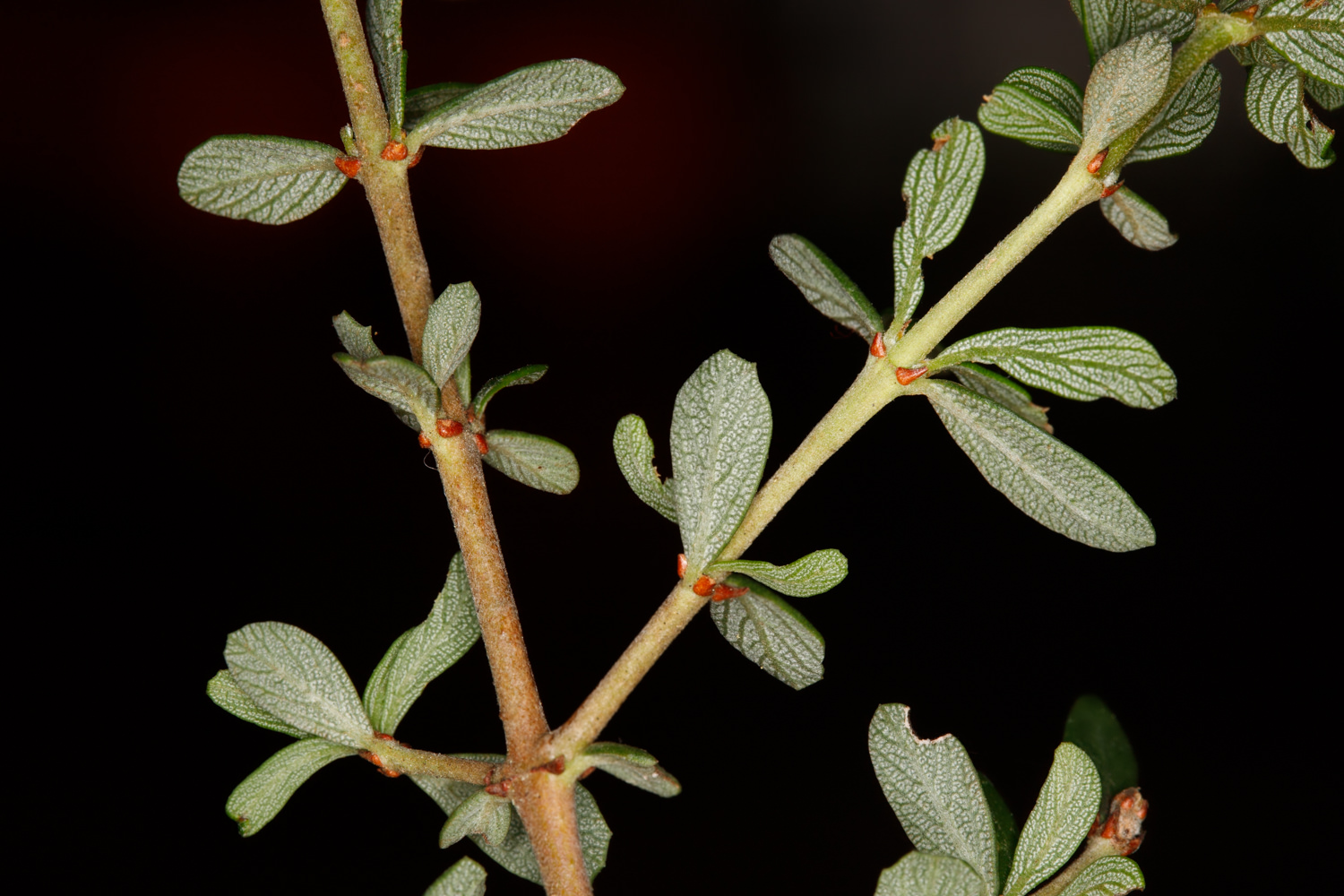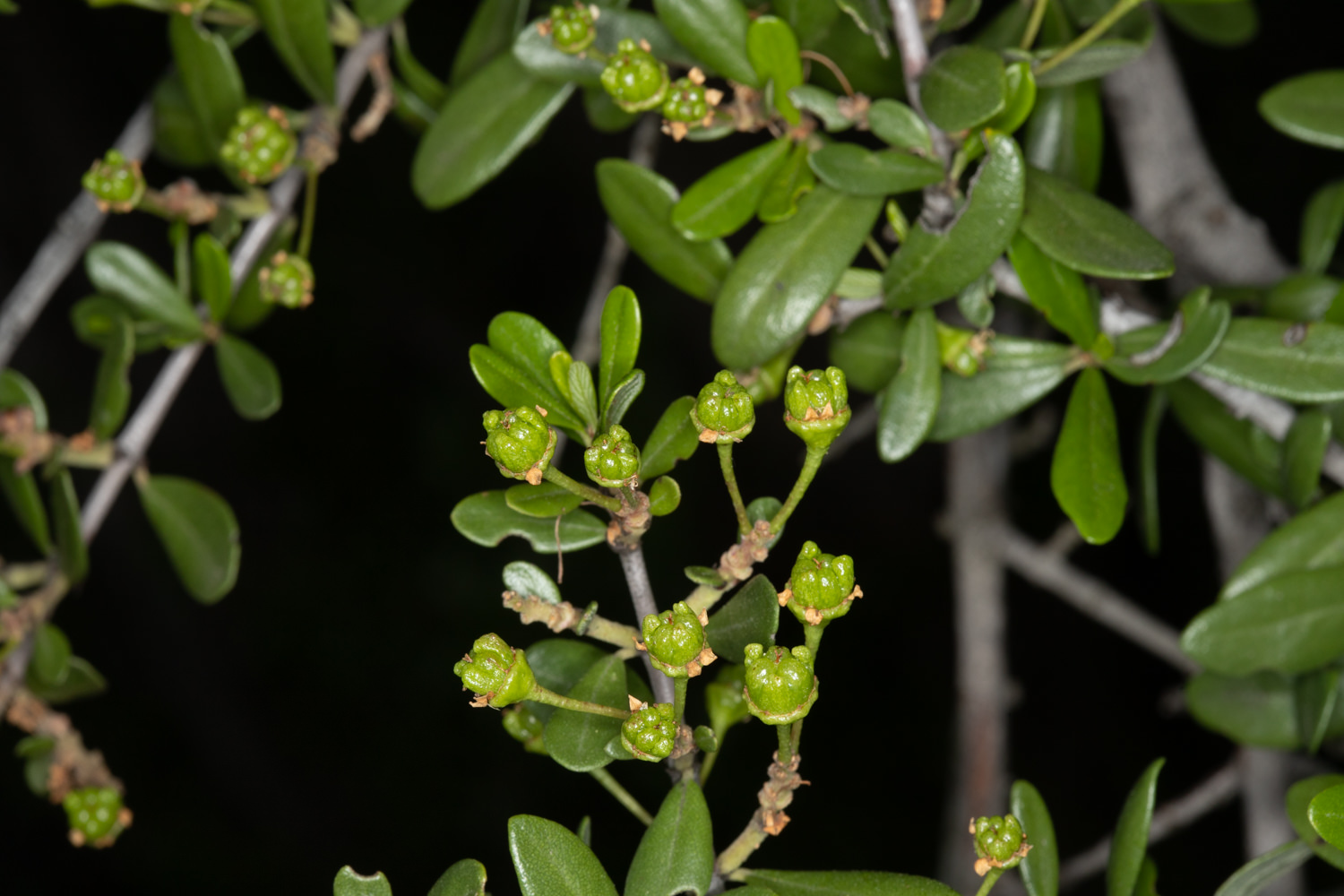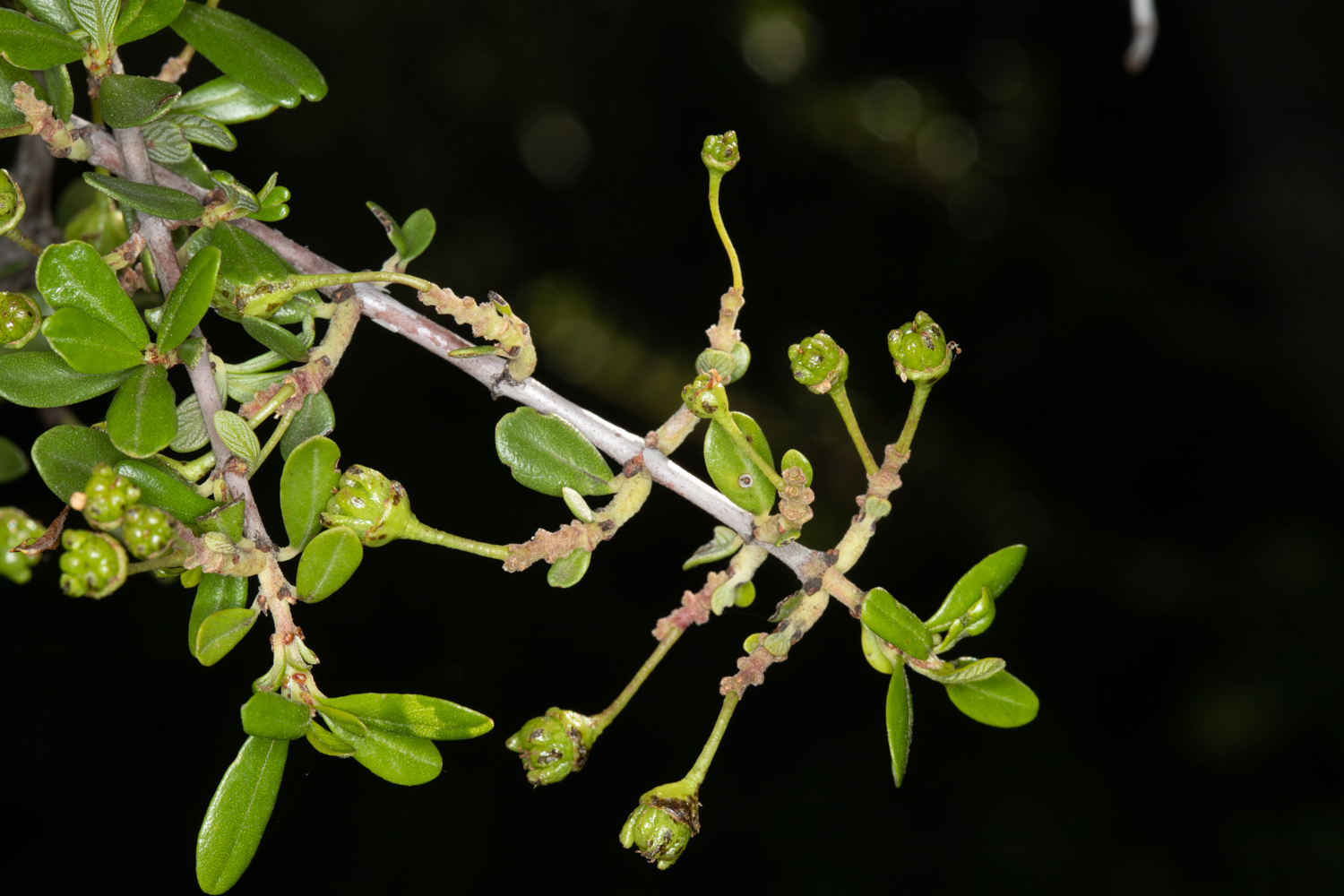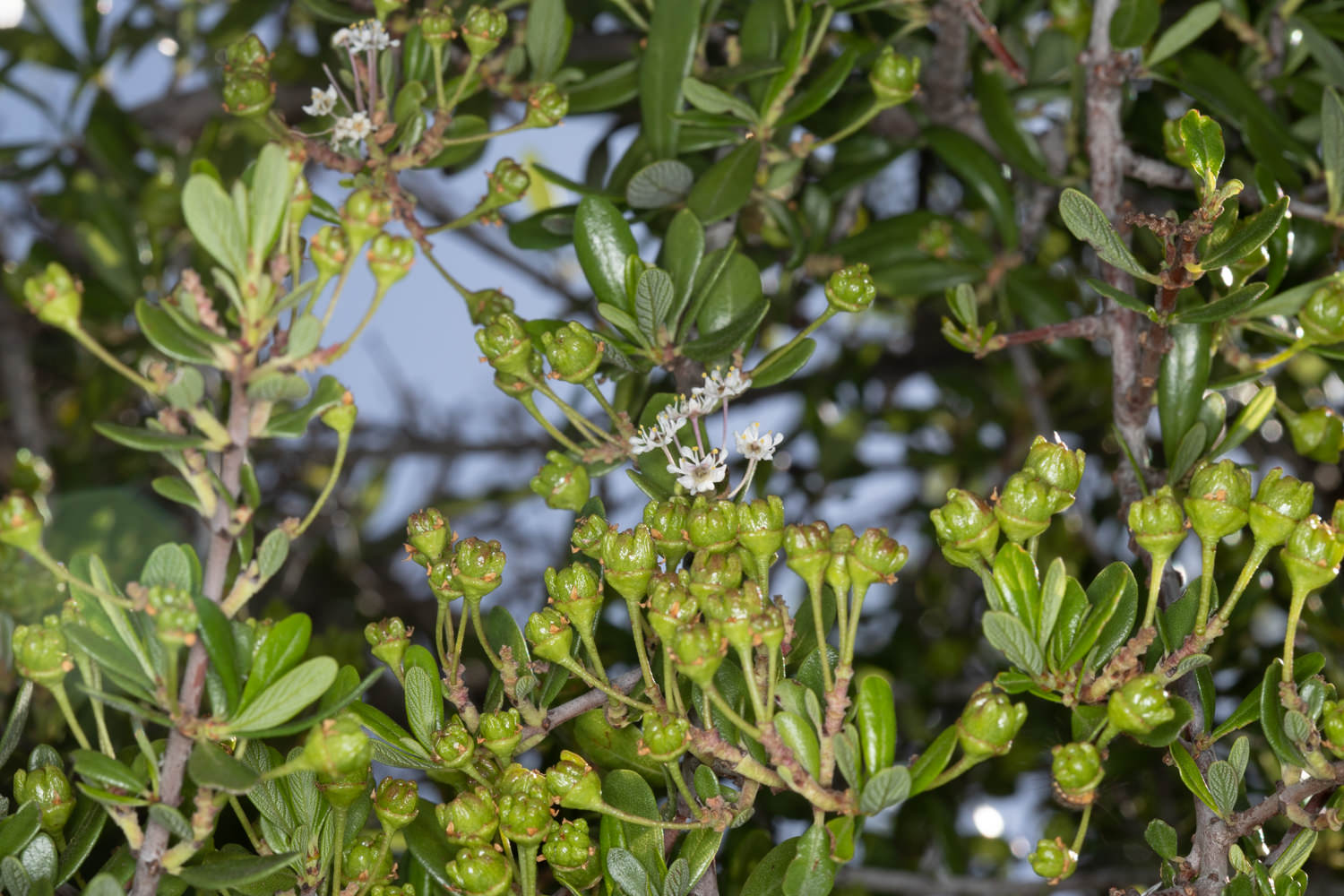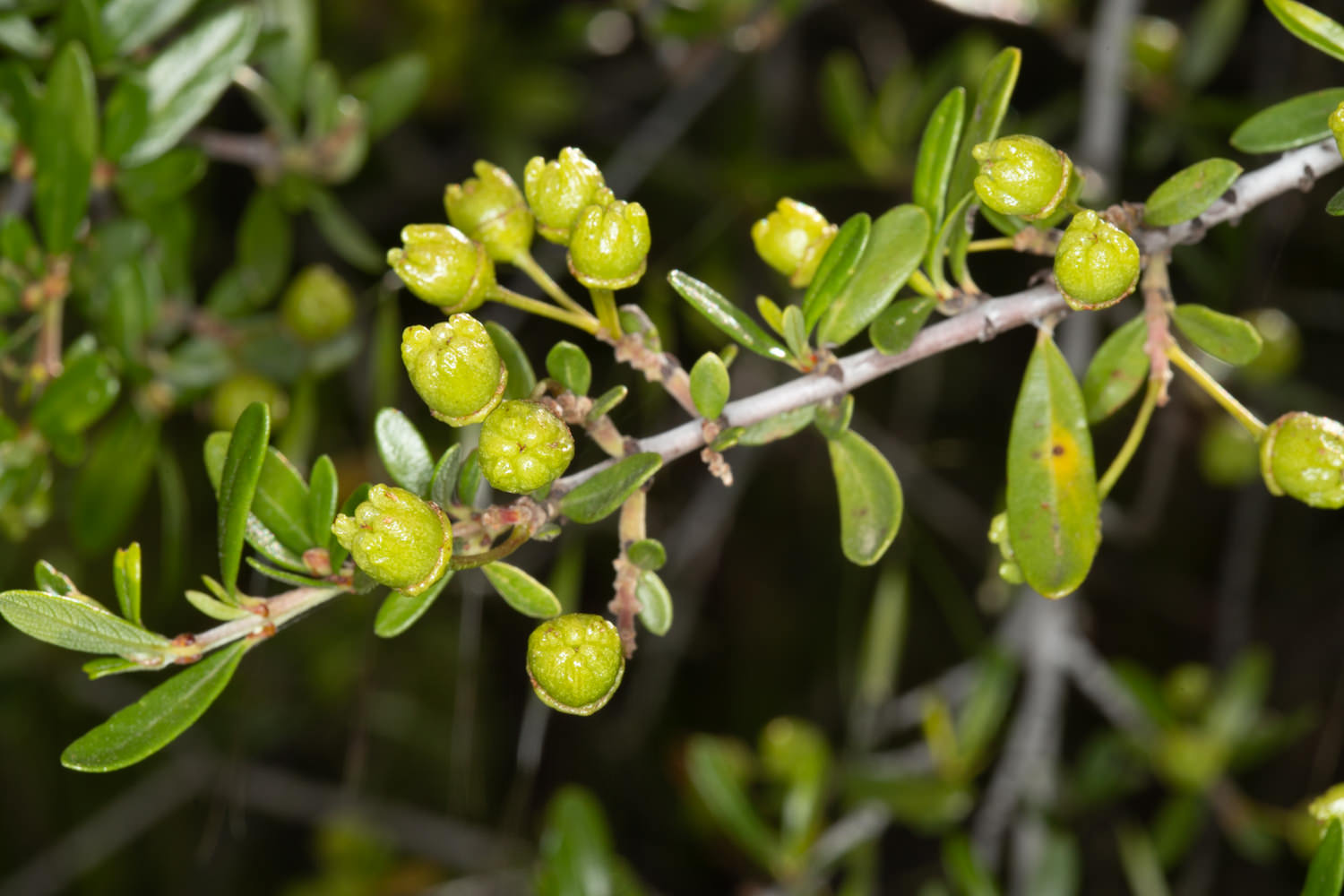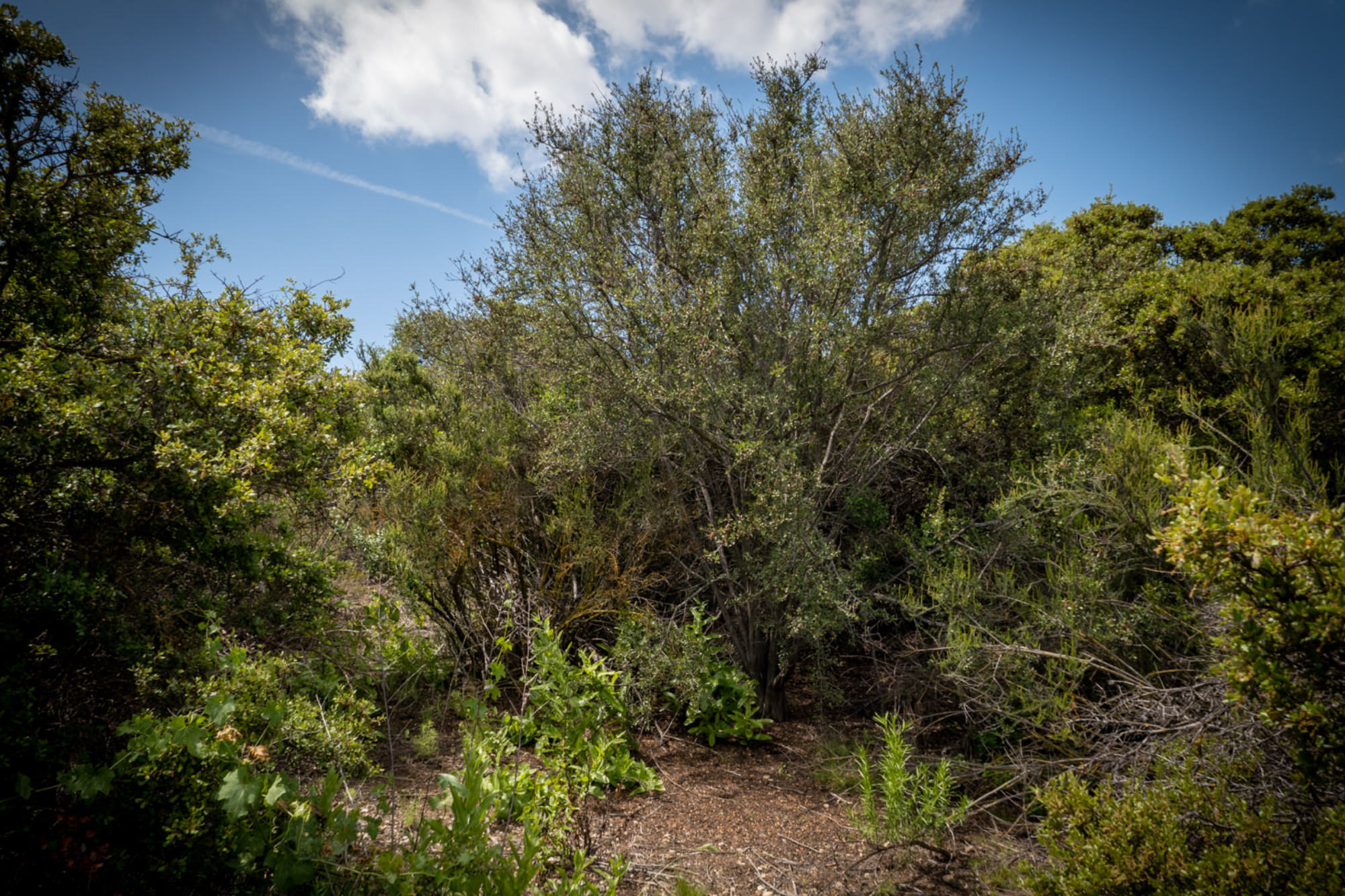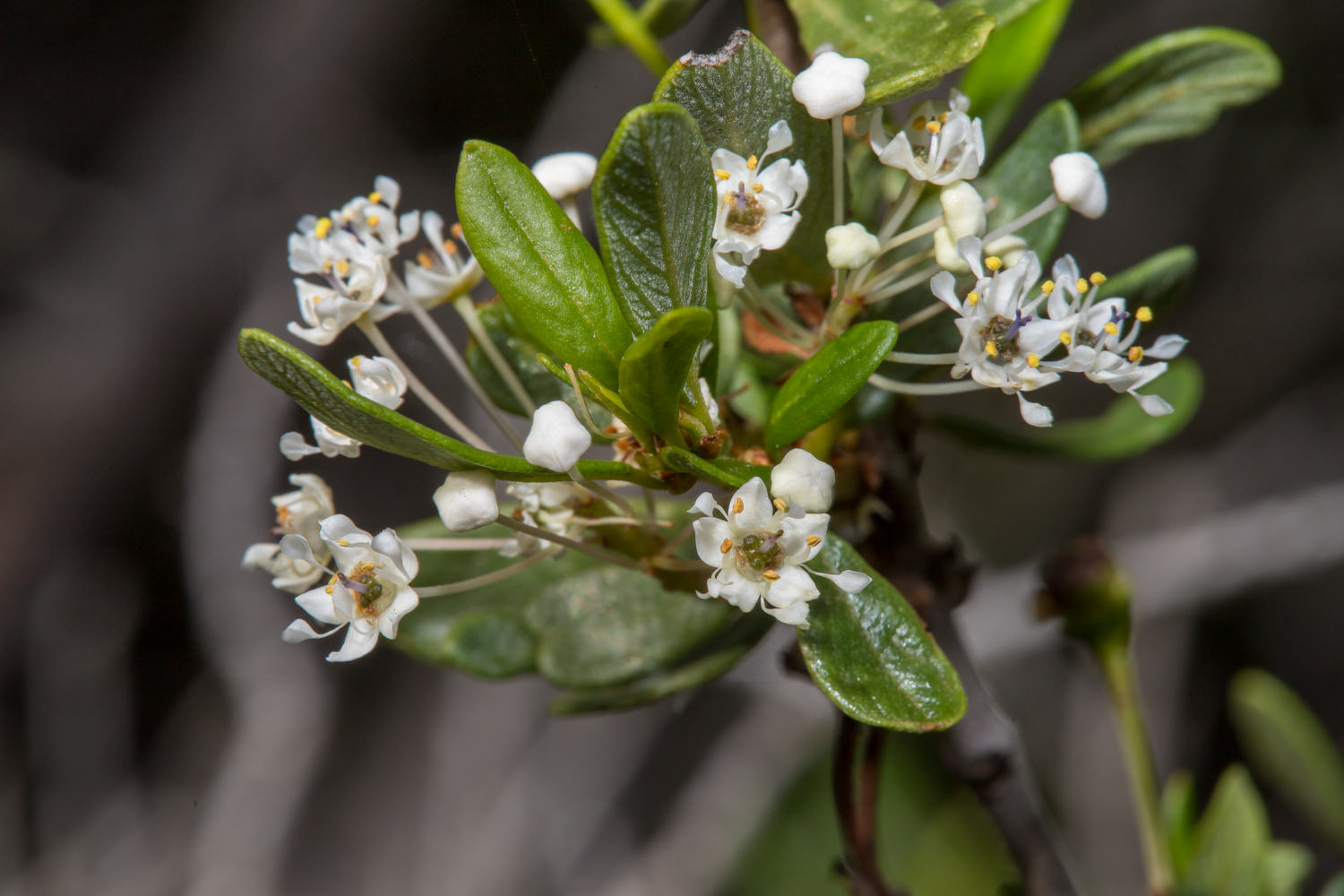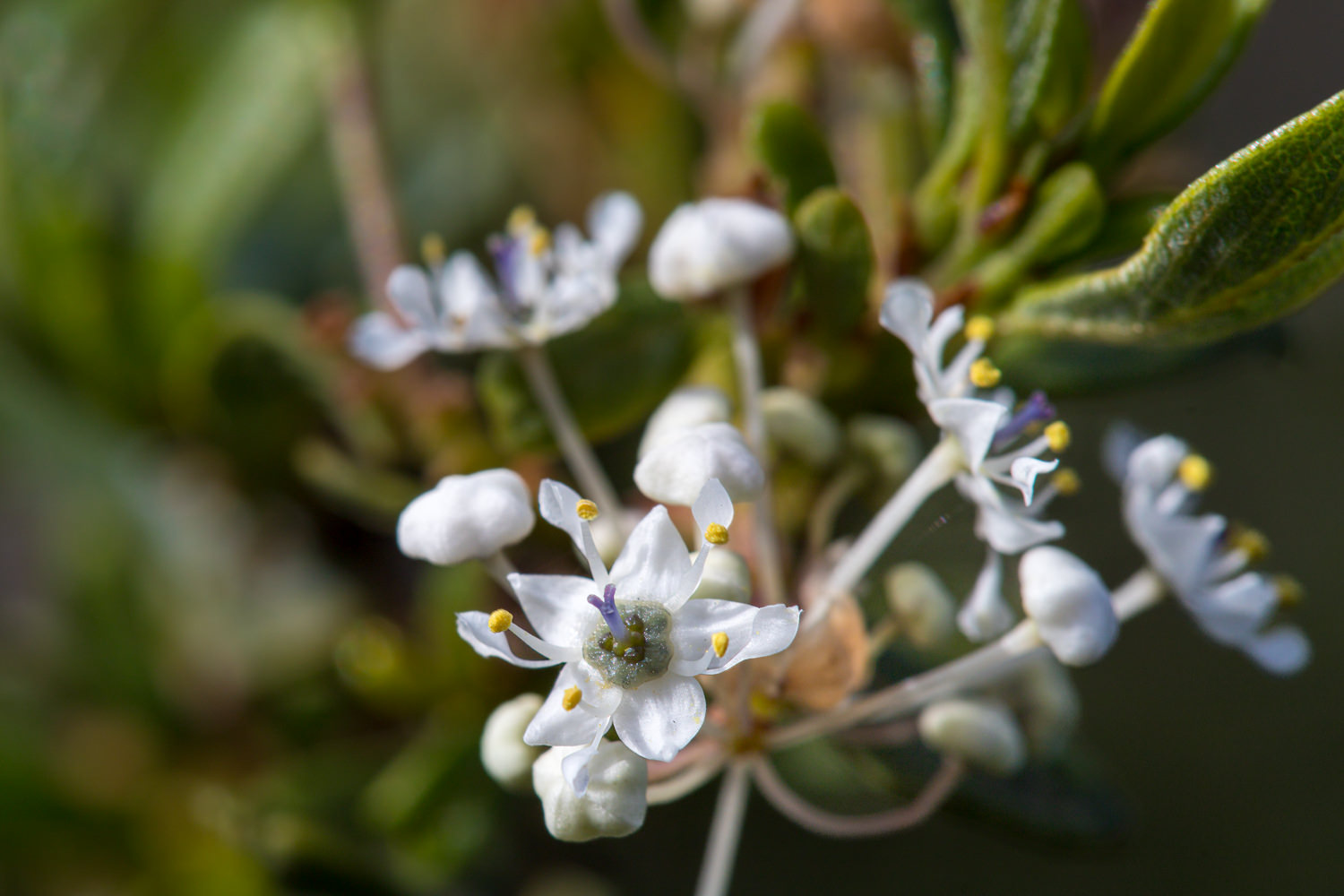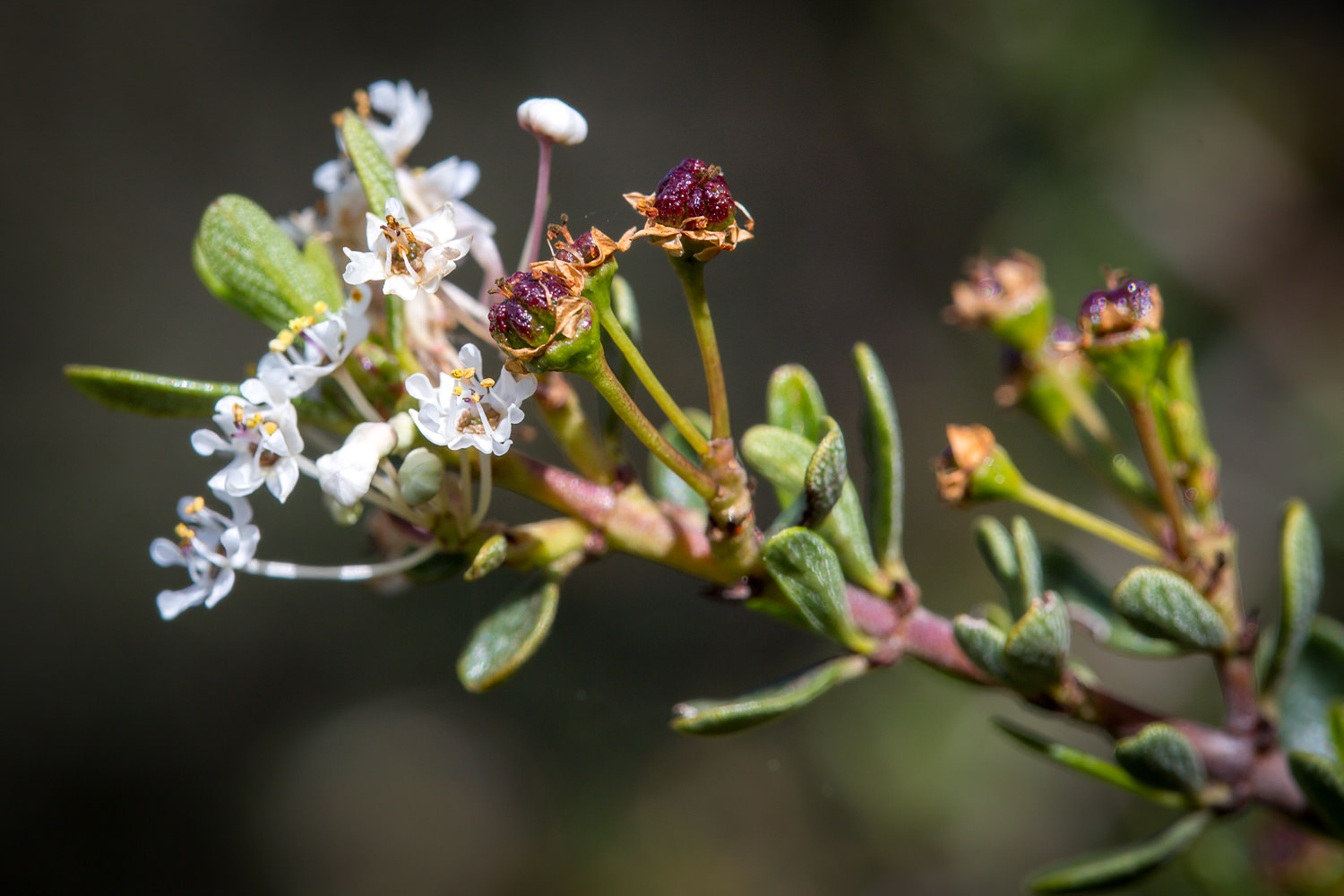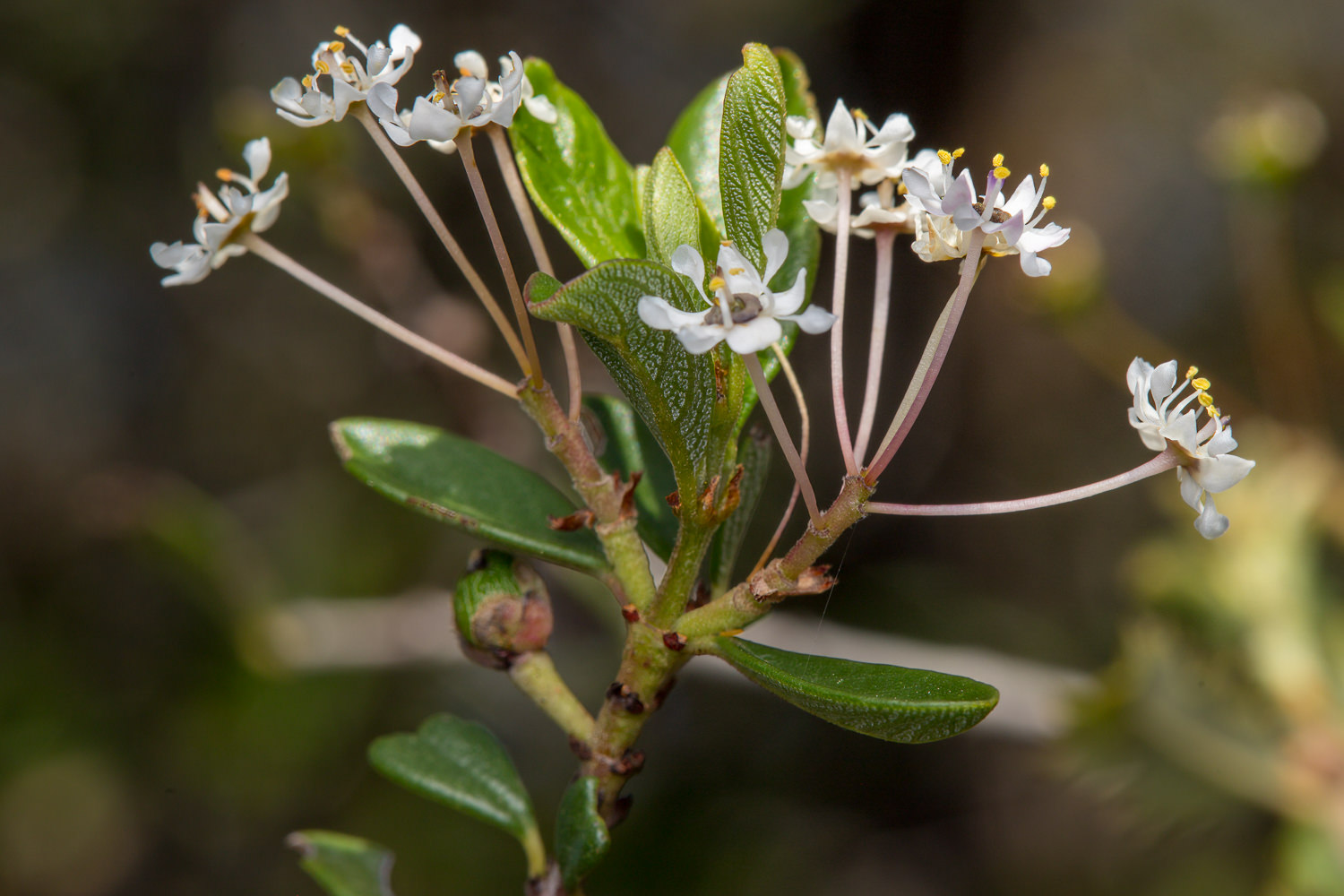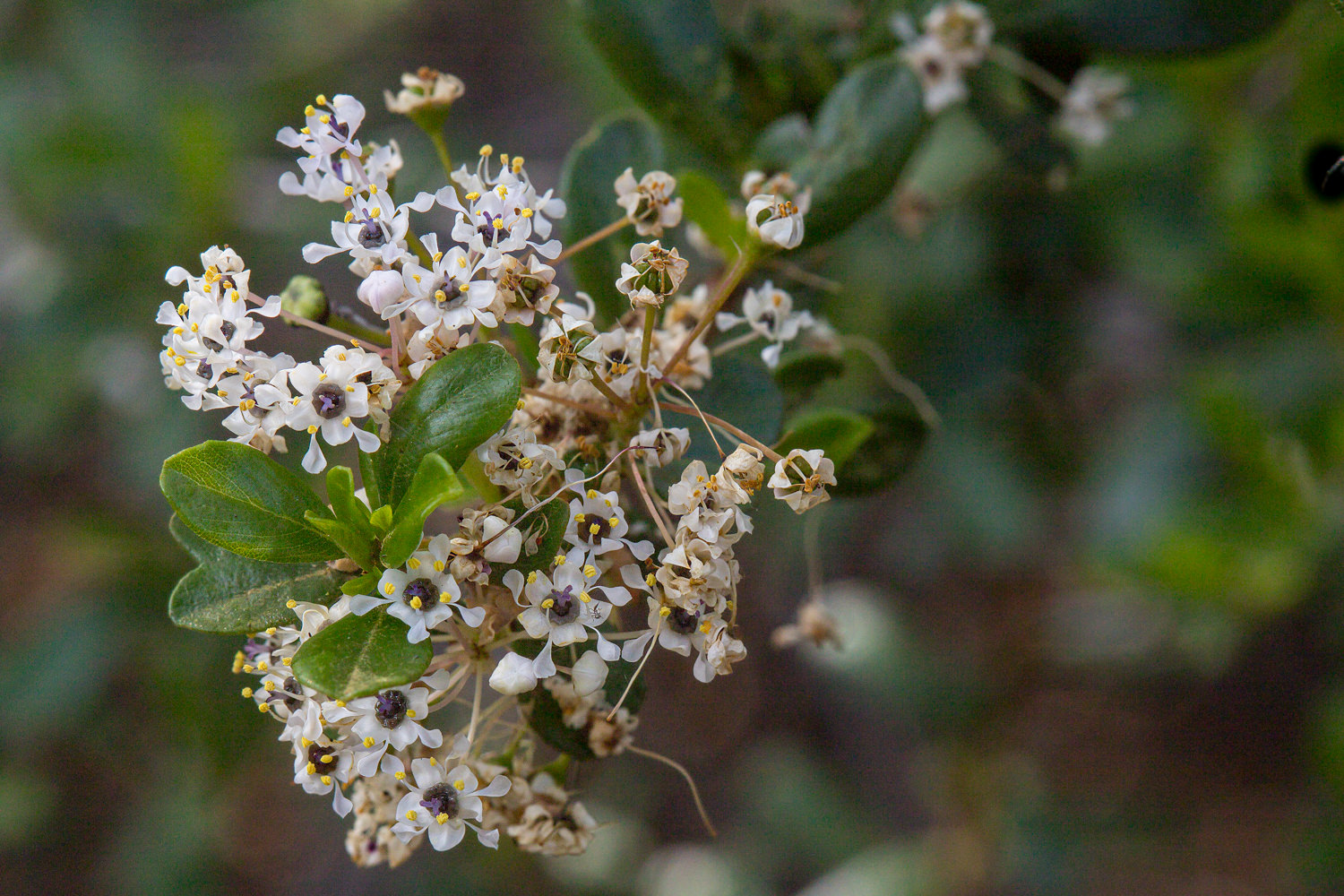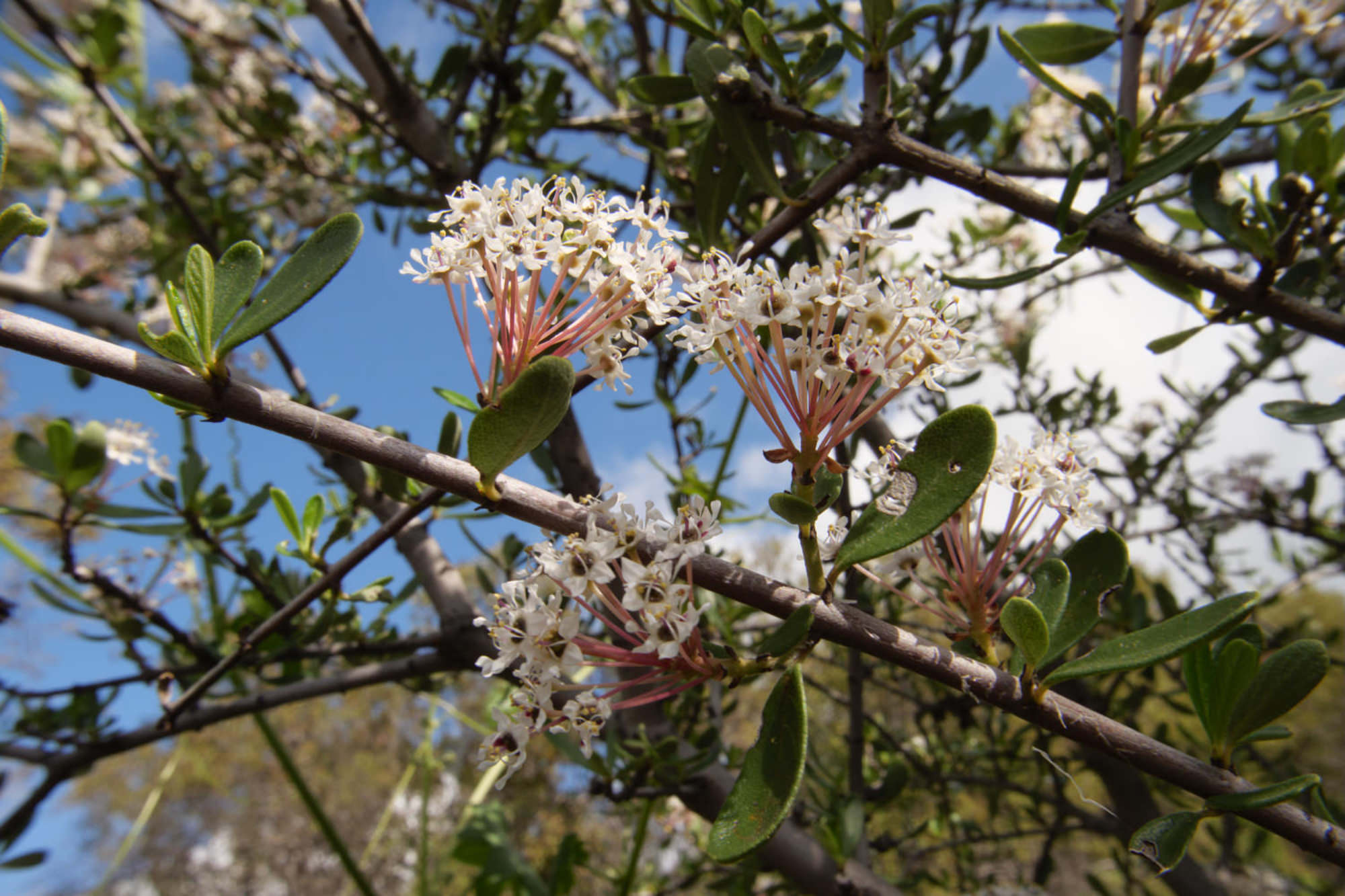Buck Brush
- Ceanothus cuneatus
| Common Name(s): | Buck Brush |
| Scientific Name: | Ceanothus cuneatus |
| Family: | Rhamnaceae (Buckthorn) |
| Plant Type: | Shrub or Tree |
| Size: | 3 to 12 feet |
| Habitat: | chaparral |
| Blooms: | February to May |
| Fire Response: | Germinate from Seed |
Buckbrush - Ceanothus cuneatus is a shrub in the Buckthorn family and is among five other ceanothus species that are found in the Santa Monica Mountains. Interestingly enough, this species is one of the most common and widespread native plants in California. This plant takes the form of a spreading bush - rounded to sprawling and has opposite evergreen leaves.
Buck brush is found in mid-elevation chaparral of the Santa Monica Mountains. The species ranges in size from 3 to 12 feet tall . At Rocky Oaks, you can find this shrub alongside C. crassifolius. Both have paired leaves but slightly different densities of flowers. Buck brush has been judged as being “less showy” by Source . Close inspection of the leaves should also help you identify the species but keep in mind that these ceanothus species hybridize with each other.
Flowering abundantly in spring - March to May - bearing bunches of tiny white flowers, do not be surprised if you find them with blue or lavender tinted flowers. The fruit is a tiny round capsule with horns.
Leaves are stiff, tough & fleshy, thus, well suited for our summer drought conditions. The leaves are opposite along stems. It is obvious the leaves are laid out differently than big pod ceanothus. Look for the paired leaves opposite of each other.
Native peoples used this plant primarily to make baskets from the young shoots, twigs for firewood, shovel handle and even arrow shafts.
Buckbrush is well adapted to fire and requires high temperatures to melt and crack open buried seeds. If an area is burned, then this can create evenly aged stands in the years after a fire. In the years after the 2018 Woolsey fire, you can see this for yourself in areas that burned.
Link to Calflora.net - the best source of this fascinating information
Name Origin: Ceano'thus: from the Greek keanothus, a name meaing thistle or spiny plant which was applied by Theophrastus and/or Dioscorides to an Old World plant believed by some to have been Cirsium arvense, and reused by Carl Linnaeus when he published it in 1753.
cunea'ta/cunea'tus: wedge-shaped, from the Latin cuneus, "wedge, wedge-shaped."
Contributed by George Sherman
Featured Plants in the Rhamnaceae (Buckthorn) Family:
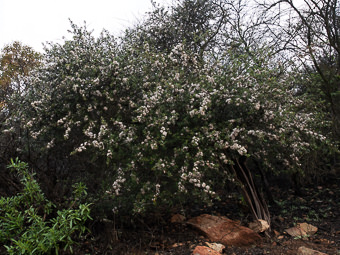
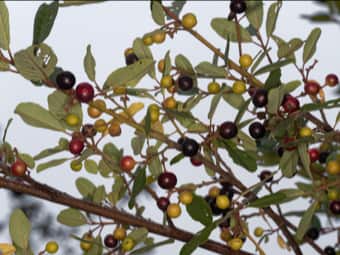
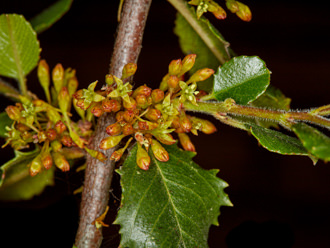
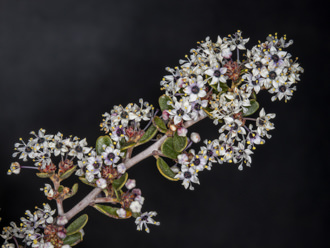
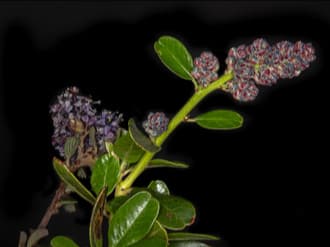
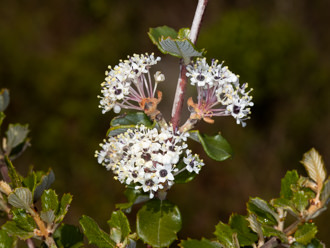
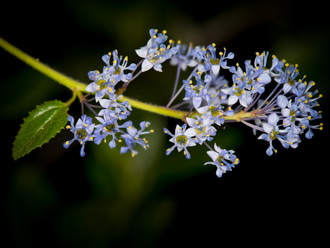
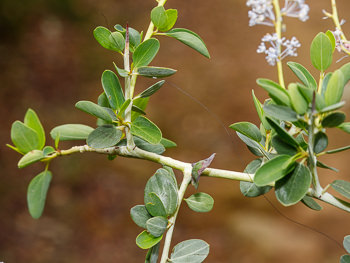
Last modified: August 21 2024 15:18:48.
Number of Images: 14
Image Size Total: 4,631,106
References:
Wildflowers of the Santa Monica Mountains, by Milt McAuleyFlowering Plants: The Santa Monica Mountains, Coastal and Chaparral Regions of Southern California, by Nancy Dale
Chumash Ethnobotany: Plant Knowledge Among the Chumash People, by Jan Timbrook
Leaf Shapes Primer - Botanical Terms for Leaves: - Link


